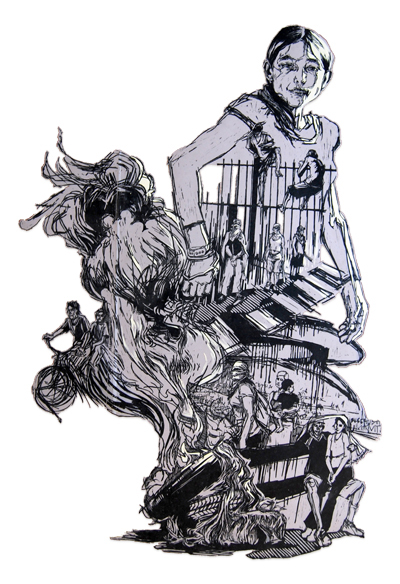Take a Peek at Jamie Wyeth’s Watercolors


Watercolor is one of those wondrous materials that can be manipulated in so many different ways. Techniques vary, levels of liquidity and viscosity can be changed, and the way the paint is applied is open to wide interpretation. There’s a volatility to watercolor painting as well, and that’s what makes water-based paints so exciting to use.
For Jamie Wyeth, son of notable American realist Andrew Wyeth, watercolor paintings have been as much a part of his oeuvre as oil painting. But Wyeth never approached watercolor art as a purist, allowing his work to live outside of the box in many ways.
He would often combine pencil, ink, gouache, acrylic, and pastel with watercolor. The mixed-media combinations allowed him to create paintings that don’t look quite like other watercolors.
There’s a weightiness to the paint—a heft that is visually interesting. Painting this way also brings in a lot of surface variation to Wyeth’s work. The paint texture can vary from rough and delicately pitted to liquidy, sticky-looking, or gleaming and glazed.
There’s also an opacity to the pigments that is rare to see in watermedia. This is the result of the artist combining different materials, but Wyeth would also build up thick layers of watercolor paint—quite a feat considering the nature of the medium. To prevent the surfaces of the paintings from cracking and flaking (when he didn’t want them to), Wyeth used Old Holland watercolors, which have an elasticity to them that the artist found useful.

Discovering what the best artists working in watercolor—like Wyeth—do allows me to know the potential of the medium and myself. With Watercolor Masters and Legends, 34 visionary artists come together in one resource to share their unique perspectives on technique, composition, fine art philosophy, and more. And with more than 125 artworks shown, you will have a feast for the eyes that will inspire you for hours upon hours in the studio. Enjoy!






Have a technical question?
Contact UsJoin the Conversation!